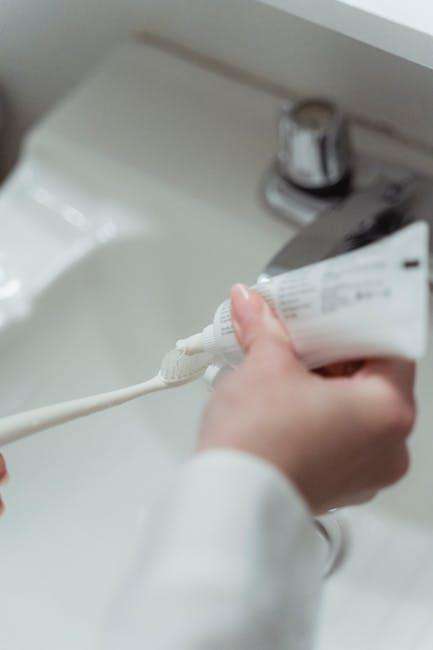Fluoride Ban Could Create Cavities for 1 of Every 3 U.S. Kids – U.S. News & World Report
Across the United States, fluoride has long been recognized as a key component in preventing dental cavities, especially among children. However, recent legislative moves and public debates on banning fluoride in water systems paint a worrying picture. According to U.S. News & World Report, a fluoride ban could put 1 of every 3 U.S. kids at risk of developing cavities, sparking urgent conversations among dental professionals, parents, and lawmakers.
Why Is Fluoride So Important for Children’s Dental Health?
Fluoride, a naturally occurring mineral, helps strengthen tooth enamel and makes teeth more resistant to acid attacks from plaque bacteria and sugars in the mouth. It also reverses early decay, preventing cavities before they become a more serious problem.
- Enamel Strengthening: Fluoride integrates into the tooth enamel, making it harder and more resistant to decay.
- Decay Prevention: Exposure to fluoride reduces the risk and severity of cavities.
- Cost-Effective Public Health Measure: Community water fluoridation is recognized as one of the most cost-efficient ways to prevent tooth decay.
The Potential Impact of a Fluoride Ban on U.S. Children
Eliminating fluoride from drinking water could have serious consequences for dental health, especially for children who are more vulnerable to cavities due to their developing teeth and eating habits. According to dental health experts and recent news reports:
- Increased Cavities: Without fluoride, tooth decay rates could surge, impacting nearly one-third of U.S. children.
- Higher Dental Costs: More cavities mean more costly dental treatments, which can strain family budgets and healthcare systems.
- Long-Term Health Effects: Poor dental health is linked to other systemic problems, such as infections and difficulty eating or speaking properly.
Table: Estimated Effects of Fluoride Ban on U.S. Children’s Oral Health
| Cavity Risk Factor | With Fluoride | Without Fluoride |
|---|---|---|
| Percentage of Kids with Cavities | Approximately 20% | Up to 33% |
| Average Dental Visits per Year | 1.2 | 2.5 |
| Dental Treatment Costs per Child | $150 | $300+ |
Arguments from Both Sides of the Fluoride Debate
While fluoride is widely supported by dental and public health professionals, the debate about its use in community water systems has grown. Here’s a snapshot of the main arguments:
Pro-Fluoride Arguments
- Strong scientific evidence supports fluoride’s safety and effectiveness in preventing tooth decay.
- Community water fluoridation reduces disparities in oral health, benefiting low-income families with limited dental care access.
- Fluoride is endorsed by numerous reputable organizations including the American Dental Association (ADA) and Centers for Disease Control and Prevention (CDC).
Arguments Against Fluoride in Water
- Concerns about potential health risks from overexposure to fluoride, such as dental fluorosis.
- Preference for individual choice in fluoride use through toothpaste or other dental products.
- Some suggest alternative preventive methods instead of mass fluoridation.
Practical Tips: How to Protect Your Child’s Teeth Without Community Fluoridation
If you live in an area considering or already implementing a fluoride ban, it’s important to take extra steps to safeguard your child’s dental health:
- Use Fluoridated Dental Products: Choose toothpastes and mouth rinses that contain fluoride.
- Regular Dental Visits: Schedule bi-annual checkups with a pediatric dentist for early cavity detection and preventive care.
- Balanced Diet: Limit sugary snacks and drinks that contribute to tooth decay.
- Oral Hygiene Education: Teach proper brushing and flossing techniques to your child.
- Consider Fluoride Supplements: Under dentist guidance, fluoride drops or tablets may be an option.
Case Study: The Impact of Fluoride Removal in Communities
When the city of Portland, Oregon, stopped fluoridating its water in 2014, subsequent studies revealed a sharp increase in cavities among children. This case highlights the real-world consequences of removing fluoride from public water supplies:
- Dental Decay Increase: Childhood cavity rates rose by nearly 10% within three years.
- Economic Impact: Local public health spending for dental treatments increased substantially.
- Public Outcry: Parents and health advocates demanded reconsideration of the ban.
Conclusion: Fluoride’s Role in Protecting U.S. Kids from Cavities
The evidence is clear: fluoride plays a crucial role in maintaining oral health for children nationwide. A fluoride ban, while motivated by concerns with valid roots, could inadvertently lead to an alarming increase in cavities affecting 1 out of every 3 U.S. kids — a public health problem with significant personal and societal costs.
Until safer and equally effective alternatives are widely available, preserving community water fluoridation remains a fundamental strategy in preventing dental decay and promoting lifelong oral health. Parents, educators, and policymakers alike must work together to ensure children get the protection they deserve — one smile at a time.


